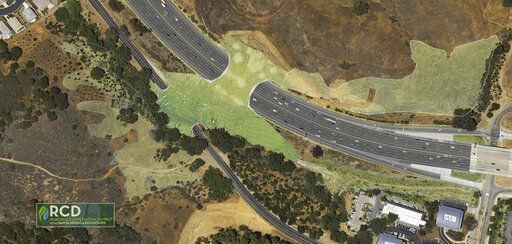BY ANDREW-ROSSI
With the millions of dollars needed to build a single wildlife overpass, why even bother with such expensive infrastructure?
Wyoming Game and Fish director Angi Bruce recently answered that question on the agency’s website. While both Game and Fish WYDOT are hedging their bets and budgets on wildlife overpasses, they acknowledge that building these structures can get expensive.
An overpass over a two-lane road can cost anywhere between $6 and $14 million to complete. Interstate overpasses can get much costlier – $20 to $30 million.
So, what number can justify $30 million? 6,000. That’s the estimated number of big game collisions that occur on Wyoming’s roads every year.
While overpasses won’t completely eliminate that number, they could significantly reduce it. Studies show when overpasses are placed in the right location, they have been proven to be 80 to 90 percent effective in reducing collisions.
That’s because wildlife overpasses meet the animals where they already want to cross. Locations are and will be determined by the data collected by wildlife biologists thru GPS collars, direct observation, and decades of research on the state’s mule deer, pronghorn, and elk.
The location and number of collisions can even play an important role in determining where overpasses would be most beneficial and reduce the number of fatalities associated with wildlife-vehicle collisions – for people and wildlife.
Despite their proven results, both WYDOT and Game and Fish are only considering overpasses as a “last resort” of a kind. If existing, lower-cost solutions are already working well enough- fencing, speed limits, signs for drivers, and others – there won’t be much incentive to change or construct anything new.
Wildlife overpasses wouldn’t be part of the discussion if they weren’t successful. That discussion is translating into action between Big Piney and La Barge in Sublette County, where millions have already been invested in the Dry Piney wildlife crossing project.
The Dry Piney stretch has one of the highest records in the state for vehicle-wildlife collisions. The Greater Yellowstone Coalition donated $200 thousand dollars to the project this summer, adding to a $14.5 million grant received by WYDOT and $2.5 million from the Wyoming Transportation and Wyoming Game and Fish Commissions.
This amount of investment makes the Dry Piney wildlife crossing project the largest wildlife crossing initiative in Wyoming’s history. What is learned here will translate into more overpass initiatives in key areas across the state.
You can more directly support wildlife crossing efforts by purchasing a Wyoming Wildlife Conservation License Plate or donating to crossing efforts.

